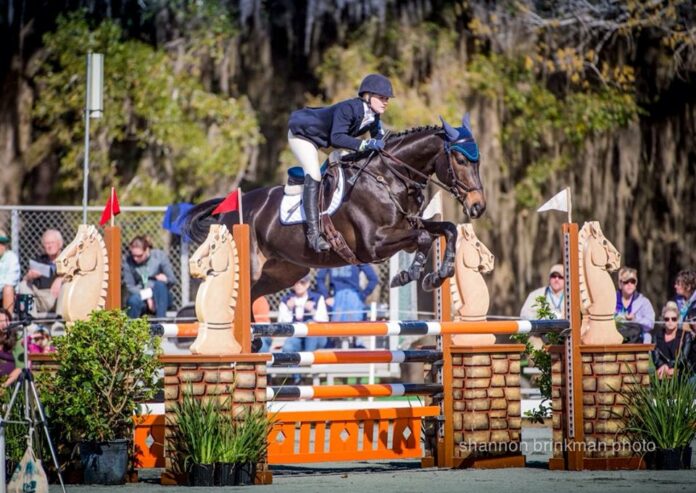The Ins and Outs of International Competition
All it takes is one glance around the warm-up ring at an FEI competition to know that international events make up a whole new league. There is no time for friendly conversation as I watch horses and riders that I’ve idolized since childhood trot by. Showing at this level means competing alongside both the world’s most elite riders and their horses, many of which cost more than the average house. The FEI, short for the Federation Equestre Internationale, is the governing body behind these intense competitions which offer riders the chance to qualify for world-renowned events such as Fair Hill and Rolex.
Upon arriving at a FEI horse trial, the rider must promptly present their horse for an in-barn inspection. This is the first of two jogs in which the rider must trot their horse in front of a panel of vets to ensure the horse is “sound,” essentially that it’s not limping or otherwise hurt, before beginning the weekend. Although nerve-wracking, the riders and their crew can look forward to the true start of the competition the next day.
Day two, dressage day, does not differ from that of the average national event other than the rider’s attire. At these shows, the riders wear “tails,” which are longer and fancier versions of average show coats. The dressage riding pattern is also more complex. Cross-country day follows. This course, again, is longer and has technical differences that make it more difficult than your average course. For example, the 1* course at Red Hills International that riders graced several weeks back included a floating cabin jump in the water complex which caused a cluster of problems. Immediately after the cross-country round comes the vet box. To test the horses’ fitness, the rider and the grooms are given about 10 minutes to cool the horse down and reduce its heart rate to an acceptable level.
“It’s like a whirlwind to get the horses taken care of — there’s so much to do in such a short time, and the stress level can be pretty high depending on how well the round went!” said preliminary event rider Kaytee Willey, reflecting on the chaos of the vet box.
One of the perks of events of this stature is the hospitality. Often, a competitor’s dinner is catered on Saturday night, and a live band and wild dance floor usually accompany the meal. Sunday morning brings the second of the jogs, this one more formal than the first. Riders don their fanciest outfits to strut in front of a huge panel of vets for the second time. Passing this jog is the golden ticket needed by horse and rider to continue on to the final phase of the FEI competition: the stadium jumping. Tensions are always at their highest in this phase since one small mistake can be very costly to a rider’s final placing.
“I always hold my breath when my friends go stadium — it’s worse to watch it than to ride it! The suspense is pretty intense when you know what’s on the line, but the elation you feel after a clear round is unbeatable,” Willey shared.
This feeling, equally as addicting as it is exciting, is what keeps horses and riders coming back weekend after weekend for these grueling international horse trials.
KENZIE WILKINSON can be found working from sunup to sundown in Florida. If you have any questions for her, contact sports@theaggie.org.
Photo by Shannon Brinkman.
Photo by Diane Flowers.




